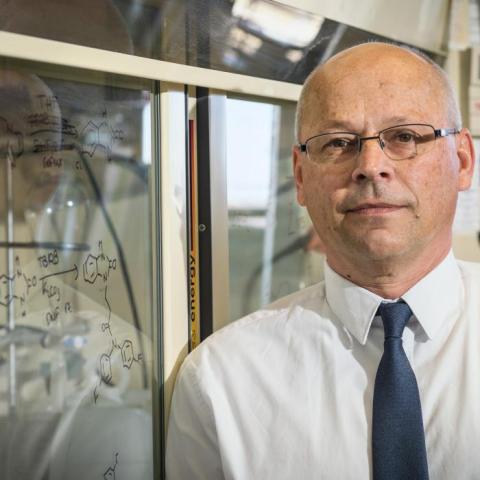- People
- Research
- Graduate
-
Undergraduate
- Prospective & Transfer Students
- General Chemistry Options
- Policies
- Tutors
- Pre-Health
- Undergraduate Advisors
-
Chemistry Major
- Process for Declaring a Major, Minor, DMP, or ACS Certification
- B.A. in Chemistry
- B.S. Chemistry
- B.S. Specialization in Biochemistry
- B.S. Specialization in Chemical Education
- B.S. Specialization in Chemical Physics
- B.S. Specialization in Environmental Chemistry
- B.S. Specialization in Materials Science
- B.A./M.S. or B.S./M.S. in Chemistry ("3+1" Degree Option)
- Undergraduate Research
- Distinguished Majors Program
- Minor
- Forms
- Study Abroad
- Undergraduate FAQs
- Undergraduate Resources
- Safety
- Seminars
- Newsletter
Cindy Knight Departmental Administrative Assistant & Undergraduate Program AdministratorView ProfileJason J. Chruma Assistant Professor of Chemistry, General FacultyView ProfileKateri H. DuBay Associate Professor of ChemistryView ProfileSergei A. Egorov Professor of ChemistryView ProfileAndreas Gahlmann Associate Professor of Chemistry and Molecular Physiology and Biological PhysicsView ProfileRobin Garrod Professor of Chemistry and AstronomyView ProfileW. Dean Harman William R. Kenan, Jr. Professor of ChemistryView ProfileIan Harrison Professor of ChemistryView ProfileKevin K. Lehmann William R. Kenan, Jr., Professor of ChemistryView ProfileXin Ma Assistant Professor of ChemistryView ProfileCharles Machan Associate Professor of ChemistryView ProfileJarrod Marto Professor of Chemistry (School of Arts & Sciences), Professor of Biochemistry & Molecular Genetics (School of Medicine)View ProfileLisa Morkowchuk Associate Professor of Chemistry, General FacultyView ProfileBrooks H. Pate William R Kenan, Jr. Professor of ChemistryView ProfileMarcos Pires Professor of Chemistry, Professor Microbiology, Cancer, and Immunology, UVA Cancer CenterView ProfileRebecca R. Pompano Shannon Mid-Career Fellow and Associate Professor of Chemistry, Biomedical Engineering, Carter Immunology CenterView ProfileLin Pu Professor of ChemistryView ProfileJelena Samonina Assistant Professor of Chemistry, General FacultyView ProfileLaura Serbulea Professor of Chemistry, General FacultyView ProfileJetze J. Tepe Professor of Chemistry and Director of Drug DiscoveryView ProfileAmrit Venkatesh Assistant Professor of ChemistryView ProfileKevin Welch Associate Professor of Chemistry, General FacultyView ProfileHuiyuan Zhu Associate Professor of Chemistry and Chemical EngineeringView Profile






















